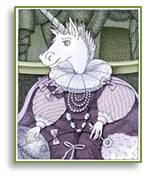 This morning I read a @MarketingProfs article by Bob Boehnlein on how to market more successfully to European audiences. He makes five good points and reading them took me back to the days when I was responsible for worldwide corporate advertising at Prime Computer, a global technology company.
This morning I read a @MarketingProfs article by Bob Boehnlein on how to market more successfully to European audiences. He makes five good points and reading them took me back to the days when I was responsible for worldwide corporate advertising at Prime Computer, a global technology company.Working Country by Country
This is neither simple nor easy, especially when one is dealing with multiple countries in Europe and Asia. Black is the color of mourning in Europe, for example, but white is what the Chinese wear to mourn. Red is associated with Communism in Europe but red is the color of luck and very auspicious in China. I found that the task was made more difficult by what I experienced as hyper-sensitive marketing people, particularly in Europe. Their European cultural sensitivity made them more than ready, almost eager, to find evidence of American cultural ignorance and American chauvinism in anything we did.
Sometimes the Europeans were right, of course. In those more innocent days, America was a terror-free zone while Europe had its own problems with Sinn Fein, the Basque group ETA, Germany’s Red Army Faction and Baader-Meinhof gang, and other assorted bad guys. So an American direct mail program that involved sending red mailing tubes though the mail designed to look like sticks of dynamite with white twine coming out of the end worked very well here but evoked cries of horreur from the Europeans. These days, of course, Americans wouldn’t imagine such a program, either.
Hitting for Six
 Sometimes the international marketing teams took American programs and adapted them for use in their own countries. Sometimes they developed programs locally and asked us to adapt them. Funny thing, though, the European programs rarely applied to US audiences. That provided one lesson in cultural sensitivity for me. I remember being in our London office when the head of marketing for the UK proudly announced the slogan for their sales meeting: “Prime Hits for Six.” Surprised to be met with blank faces, they then explained the reference to the cricket-challenged, and unexcited, American team.
Sometimes the international marketing teams took American programs and adapted them for use in their own countries. Sometimes they developed programs locally and asked us to adapt them. Funny thing, though, the European programs rarely applied to US audiences. That provided one lesson in cultural sensitivity for me. I remember being in our London office when the head of marketing for the UK proudly announced the slogan for their sales meeting: “Prime Hits for Six.” Surprised to be met with blank faces, they then explained the reference to the cricket-challenged, and unexcited, American team.
I tried very hard to be aware of their cultural sensitivity but sometimes found it difficult to overcome what seemed to be a reflexive negative reaction to anything created by Americans. One advertising campaign involved using mythological figures or characters from fairy tales. I made sure that our ad agency used characters from European fairy tales: a mermaid, a unicorn, a leprechaun, etc. No Paul Bunyan, Pecos Bill, or Johnny Appleseed would raise screams of outrage from our friends across the pond. No sir.
We selected a well-known and highly regarded—if American—designer, Seymour Chwast, to do the illustrations. I also made sure the illustration of the unicorn was true to the myth and not just a horse with a narwhal horn. The campaign ran very successfully in America but met a lukewarm reception in the UK.
I went over to London to discuss the “problem” with our UK team. The meeting was in the office of their ad agency, which was located on the second floor of an office building. As I climbed the stairs, I noticed that the wall alongside the stairs featured an exhibition of the work of Seymour Chwast. Hmm. That seemed like a good sign.
The meeting started and our UK marketers told that the ad campaign was not usable there because the characters were “too American.” I calmly (I hope) pointed out that the characters all came from European fairy tales that had nothing to do with America. Mermaids are associated with Denmark, leprechauns with Ireland, etc. Stymied, they went on to their second point: the “style” of the illustrations was too American. At this point, steam was coming not only from the pot of Earl Grey on the table. Grateful that I had taken the stairs instead of the lift, I directed them to the wall outside their office where they had posted an exhibition of this American illustrator’s work. Grudgingly, they conceded the point.
Have Things Changed?
It was a rare victory and it was a long time ago. So I wonder: have things changed? Do European companies marketing to an American audience ponder articles about how best to do it? Do they explore American culture to determine the best messages and images to achieve their goals? Do they worry about whether Americans understand a cricket reference or a quote from a British TV programme?
Is European cultural sensitivity a one-way street or have things changed since then?

